The Hard-as-Hell, Beautiful Life of a Cowboy

The cowboy culture of the American West takes a historical backseat to every other region in the Americas. But whether in Texas or Brazil, the core of a cowboy is the same: a connection between man, animals, and the land. Uruguay-based photographer spent the last decade photographing these men across North and South America and has narrowed down thousands of images into a new book called . Here, Fabini shares some his favorites images and characters from book.
Photo: Vaqueiros in Brazil. Their handmade leather armor not only protects the men from the burning sun, but also shields them from bare branches and long, sharp needles of the surrounding bush.
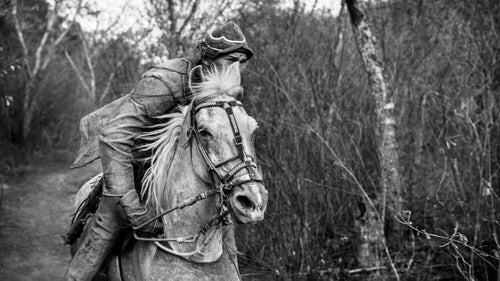
A Brazilian vaqueiro rides through the forest after news of missing cattle. As a group, the vaqueiros are known for their speed and intensity.
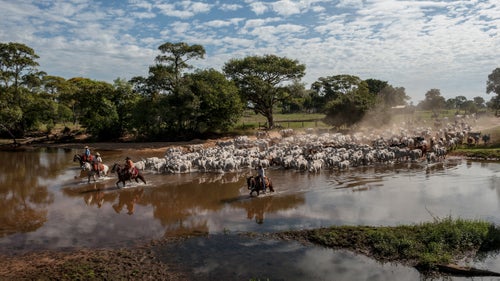
A group of men driving cattle to auction in Brazil. The comitiva, or cattle drive, can take as long as a month for some, depending on the location of their herd.

Pedro Arthur, a cattle breeder, hard at work in the countryside of Brazil.
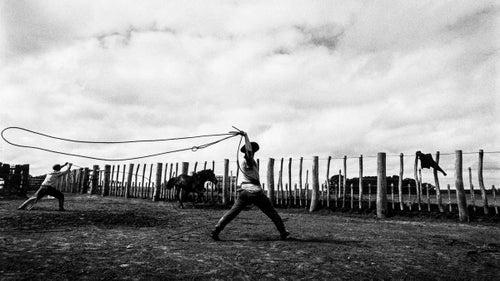
Gauchos at Estancia La Invernada in Uruguay roping colts for gelding.

A portrait of a Uruguayan gaucho. Only years of cattle work—spending nights out in the open with a poncho as a blanket, the saddle as a pillow, and a sheepskin as a mattress—could produce a look like this.
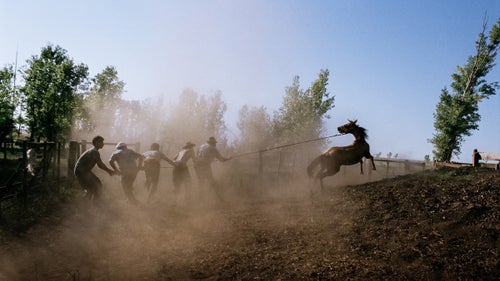
Five men struggling to overpower a bagüal or bronco at Estancia Santa Beatriz, Uruguay.
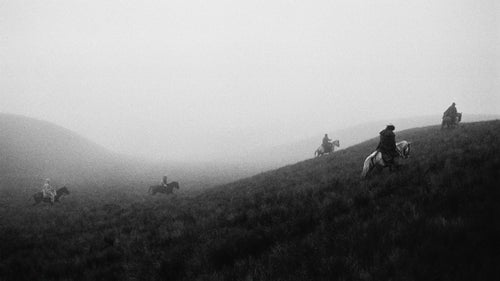
Ecuadorian cowboys, called chagras, rounding up wild horses on a foggy, wet afternoon.
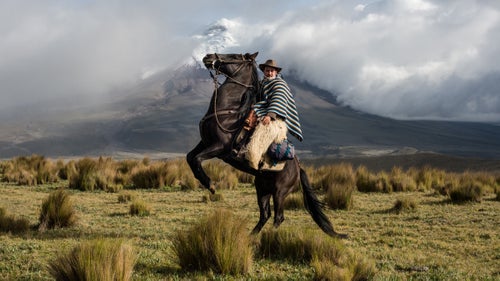
Guido Villamarín showing respect to the still-active Cotopaxi volcano in Ecuador on his way to a local roundup.
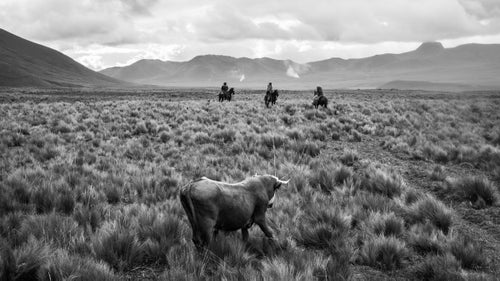
Enraged after being lassoed, a bull’s blood pressure can become dangerously high. To avoid its death, the chagra will cut a piece of the bull’s tail to release pressure.